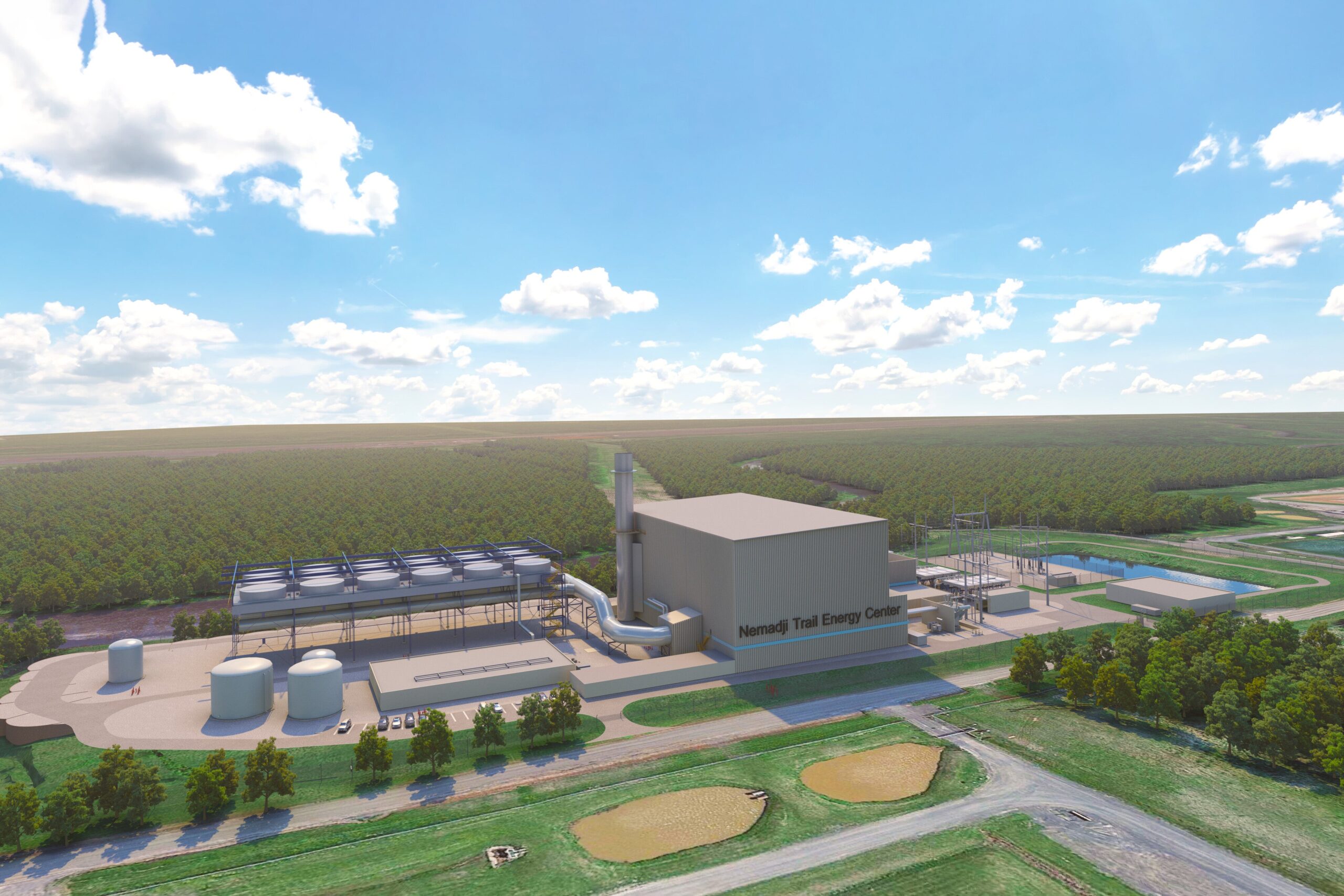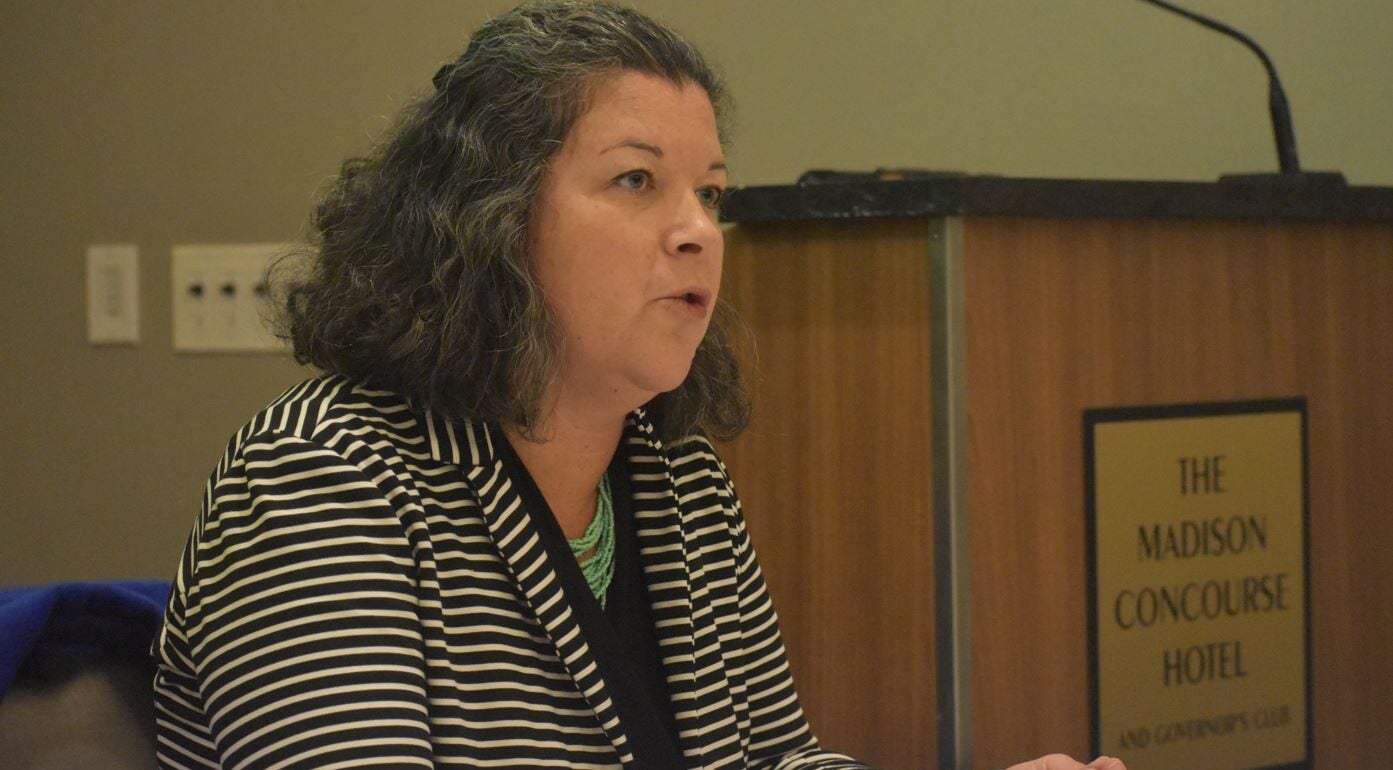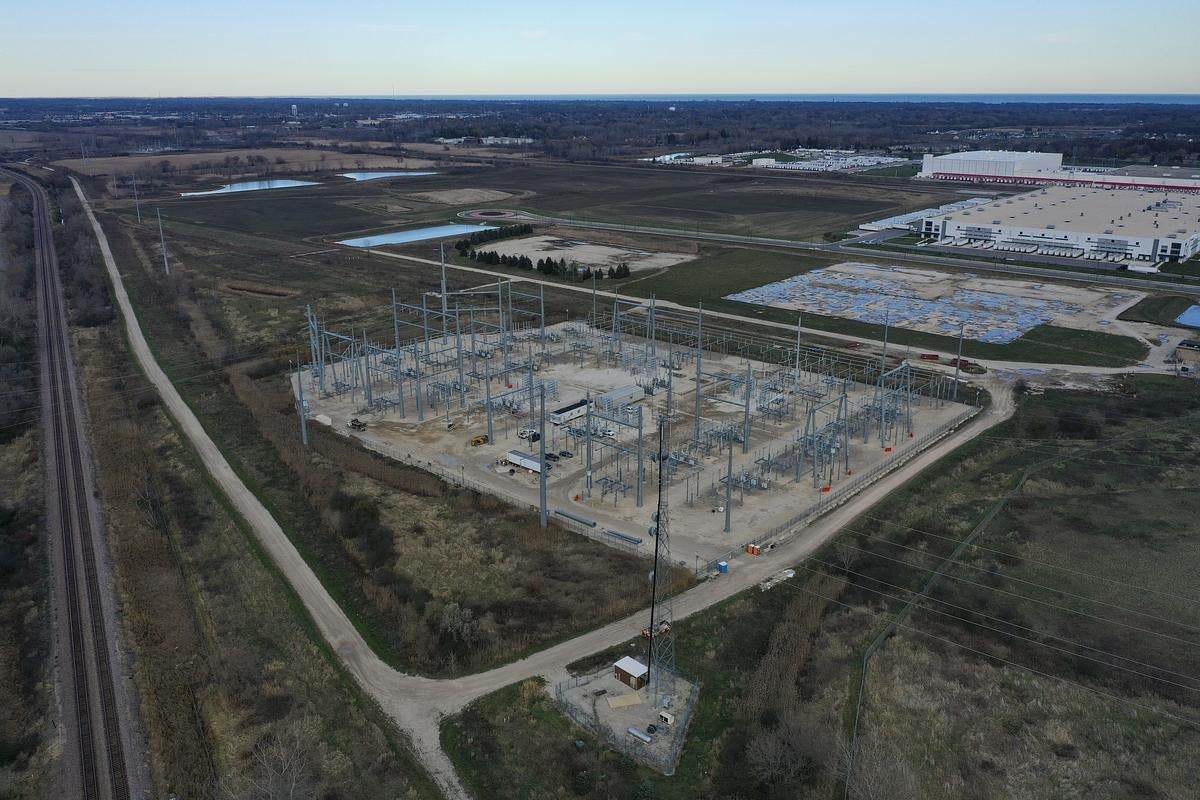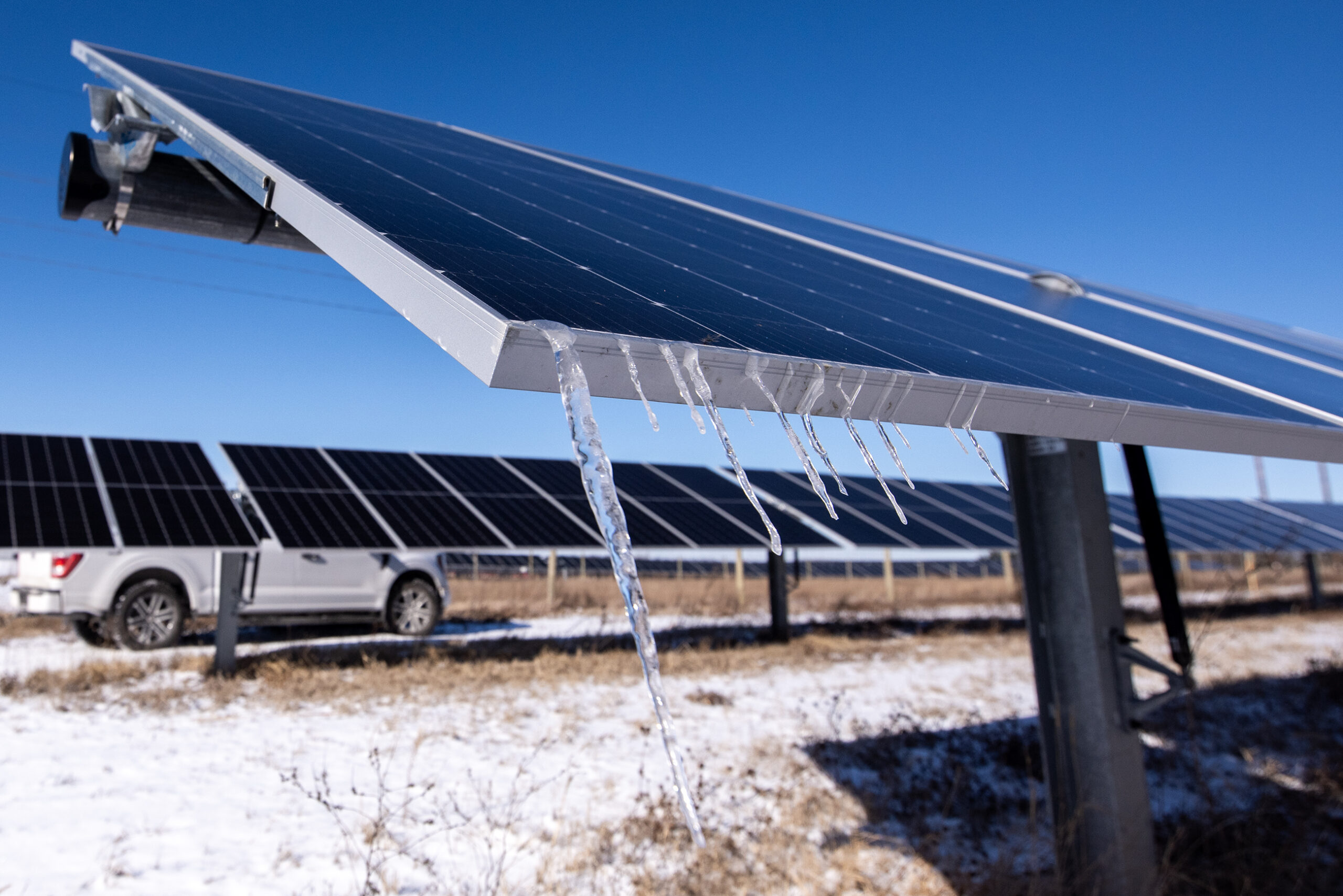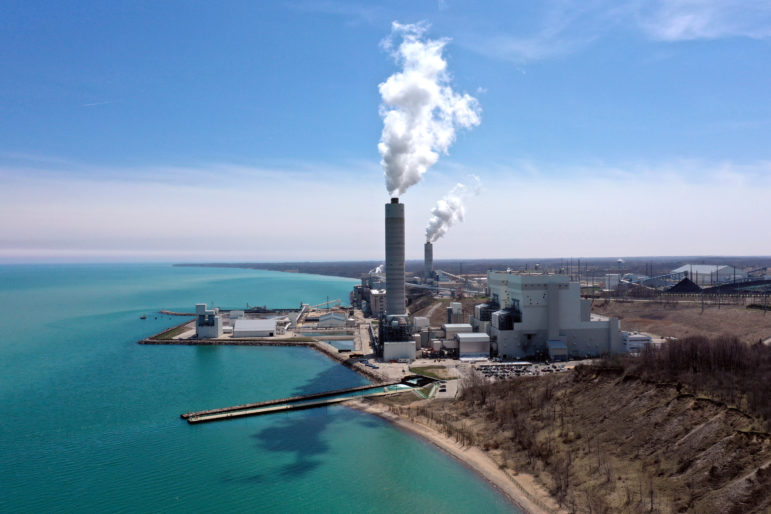Madison-based Alliant Energy has announced it plans to phase out coal generation as part of the utility’s goal to reach “net-zero” carbon emissions by 2050.
Alliant released its 2020 Corporate Responsibility Report Wednesday and outlined plans to eliminate all coal from its electricity generation by 2040, which is about 10 years sooner than its previous goal. The company also plans to speed up its carbon reduction goals by cutting emissions 50 percent from 2005 levels by 2030.
Gov. Tony Evers set a goal last August for Wisconsin to produce carbon-free electricity by 2050. A United Nations panel on climate change has urged policymakers to cut emissions to avoid the worst effects of rising temperatures and environmental damage.
News with a little more humanity
WPR’s “Wisconsin Today” newsletter keeps you connected to the state you love without feeling overwhelmed. No paywall. No agenda. No corporate filter.
But Alliant’s leaders noted that the company developed their goals with customers at the forefront rather than focusing on carbon reduction.
“Our customers are asking for cheaper energy. They’re asking for more affordable energy, so that’s what we’re focused on,” said Jim Gallegos, the company’s senior vice president and general counsel.
Gallegos said they believe making carbon reductions will set customers up to be competitive long-term by providing cheaper energy.
Alliant announced a $900 million plan in May to add 675 megawatts of solar across six counties as part of its goal to add 1,000 megawatts of solar power by the end of 2023. Alliant subsidiary Wisconsin Power and Light anticipated its roadmap for retiring the use of coal and accelerating the company’s transition to renewable energy would save customers between $2 billion and $6.5 billion over the next 35 years.
Alliant also announced in May that it planned to shutter its Edgewater coal plant in Sheboygan by the end of 2022. That leaves Columbia Energy Center in Pardeeville as the remaining coal-generating station that Alliant co-owns with Wisconsin Public Service and Madison Gas and Electric.
Gallegos said they’re discussing plans with the co-owners whether to retire the Pardeeville facility or change ownership, with retirement being the most likely scenario.
The goal to have net-zero carbon emissions by 2050 doesn’t mean shutting down all fossil fuel generation by that date, according to Jeff Hanson, Alliant’s director of environmental services and corporate sustainability. He said that would include offsetting carbon dioxide that’s emitted from natural gas plants, whether that would be through carbon sinks or the purchase of renewable energy credits.
“The technology is rapidly advancing,” said Hanson. “Costs are coming down and capabilities are really being ramped up quickly on areas like battery storage or carbon-free fuels or even carbon capture or other types of technologies.”
Environmental groups have supported Alliant’s transition to cleaner, cheaper energy. But groups like the Sierra Club have called on the company to speed up its transition and shut down the Pardeeville facility by 2030. The group released a paper in May that said operating the Edgewater and Columbia Energy Center plants through 2030 would cost ratepayers up to $461 million.
Alliant has said that the Edgewater facility was expected to cost customers around $220 million in capital and operating expenses through 2026, had it not been retired.
The company’s plan to reduce emissions is appreciated since they’re one of the larger investor-owned utilities, according to Scott Blankman, director of Clean Wisconsin’s air and energy program. He’d like to see the state’s other large utilities follow suit. But, he also said the company’s plans to retire coal by 2040 raised a red flag.
“I think that the 2040 time period, if it applies to Columbia, would to me just be a business as usual timeframe,” said Blankman. “I think that would just be kind of allowing the plant to continue to operate. You’d probably have to sink billions of dollars of additional investment into it over that 20-year time period, and that just seems foolish when you’ve got lower cost solar, lower cost wind, energy storage and new technologies.”
Blankman praised Alliant for deciding not to add more natural gas generation as part of its plans, but he also questioned what will happen when those gas plants need to be retired.
Consumer advocates like the Citizens Utility Board (CUB) want to make sure the transition to renewable energy doesn’t force customers to pay twice for new investments while paying off coal plants that are no longer economical.
“In a lot of these proposals, what you see is they’re proposing to shut down the coal plant, but making the customers still pay for that for years, perhaps decades or more to come. That’s an issue,” said Tom Content, CUB’s executive director.
He also worried about the pressure new projects may place on customers’ electric bills through rate changes after utilities have made significant investments to operate coal plants and build natural gas facilities.
Content would like to see utilities explore innovative financing to pay off their investments as one means to help customers avoid significant costs while they pursue more renewable energy. He’d also like to see a larger role for energy efficiency in the clean energy transition so customers have an opportunity decrease their costs while lowering emissions.
Alliant joins Minnesota-based Xcel Energy along with Madison Gas and Electric in its goal to go carbon-neutral by 2050. WEC Energy Group, which owns We Energies and Wisconsin Public Service, has set a goal to cut carbon emissions 80 percent by 2050 — although a utility spokesperson has said they intend to update their goals by the end of the summer.
The U.S. Energy Information Administration reports the state’s coal-fired plants provided 42 percent of Wisconsin’s electricity in 2019, the first time coal made up less than half of Wisconsin’s power mix in more than 30 years.
Wisconsin Public Radio, © Copyright 2025, Board of Regents of the University of Wisconsin System and Wisconsin Educational Communications Board.



